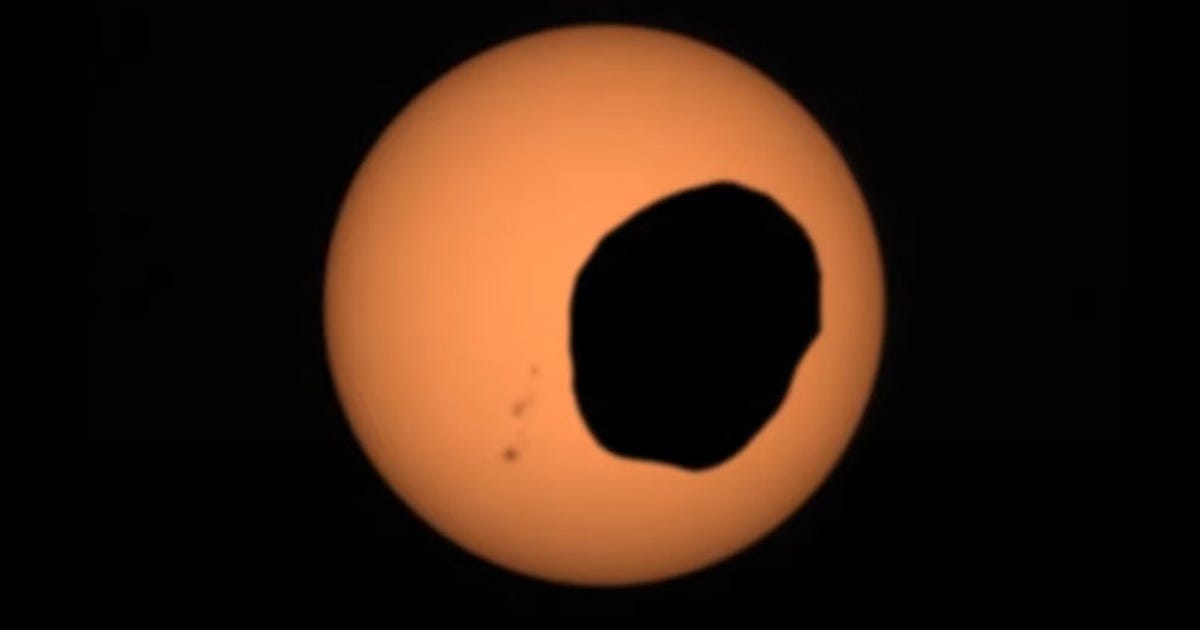
If you’re as obsessed with T. rex as we are at CNET, then you rue the day that an asteroid crashed into the Earth some 66 million years ago, causing untold devastation and ending the reign of the dinosaurs. Over the past few years, researchers have shown that the Chicxulub impact turned the oceans to acid and generated a devastating tsunami that lapped the Earth.
About 3.4 billion years ago, the same thing might’ve happened on Mars. Fortunately, there were likely no alien dinosaurs around to worry about it.
In a study, published in the journal Scientific Reports on Dec. 1, researchers detail evidence of a collision between Mars and an asteroid that occurred early in the planet’s life. Using geographic information collected by previous researchers and orbiting spacecraft, the team identified where this asteroid may’ve hit — and the havoc it might’ve caused.
The analyses focused on a crater, recently dubbed Pohl after the acclaimed science fiction writer Frederick Pohl, in a region known as Chryse Planitia, north of the Martian equator. The 69-mile wide scar, Pohl, is one of many craters in the area, formed by impacts from wandering space rocks during Mars’ early history.
The area is particularly interesting. From the air, Chryse Planitia paints a striking picture. There are clear outflow channels that’ve led scientists to suggest the region was once home to an ocean. For that reason, in 1976, NASA sent its Viking 1 lander to make a home on Mars in the area, landing it near a “shoreline” of sorts. The Viking orbiters also imaged it from the air. The images from those spacecraft showed some unusual features, which had led previous researchers to believe the region may’ve experienced some extremely turbulent times in the past.
And by turbulent, we mean two “megatsunamis.” Though the more recent megatsunami’s location has been hypothesized, the cause of the earlier tsunami, 3.4 billion years ago, has remained unknown.
By using computer simulations the researchers determined that a 1.8- to 5.6-mile-wide asteroid could’ve created Pohl crater and thus, the raging tsunamis. The size of the asteroid is about two to seven times larger than Phobos, a Martian moon that’s expected to one day crash into the surface.
This asteroid would’ve smashed into the Martian surface through shallow waters, about 400 feet deep. Such an impact would be remarkably similar to the Chicxulub impact that occurred on Earth 66 million years ago. In that instance, the asteroid was believed to be about 6 miles wide. It also slammed into a shallow ocean.
The simulation suggests the impactor would’ve crashed into Mars and released the equivalent of, oh, perhaps 13 million megatons of TNT energy. The most powerful nuclear weapon ever tested, the Tsar Bomba, released about 56 megatons. This massive impact would’ve created a megatsunami over 800 feet high, almost three times the size of the Statue of Liberty, that significantly remodeled some of the ancient shoreline of the Chryse Planitia ocean.
You can see why it would be a tough day for a Martian dinosaur.
On Mars, a Massive Asteroid Collision May Have Caused a ‘Megatsunami’ – CNET
Source: Media Star Philippines


0 Comments